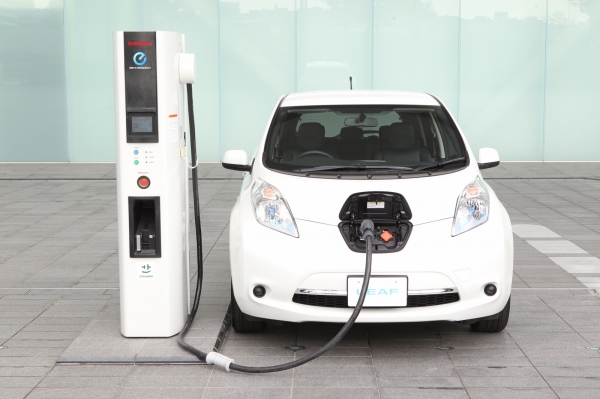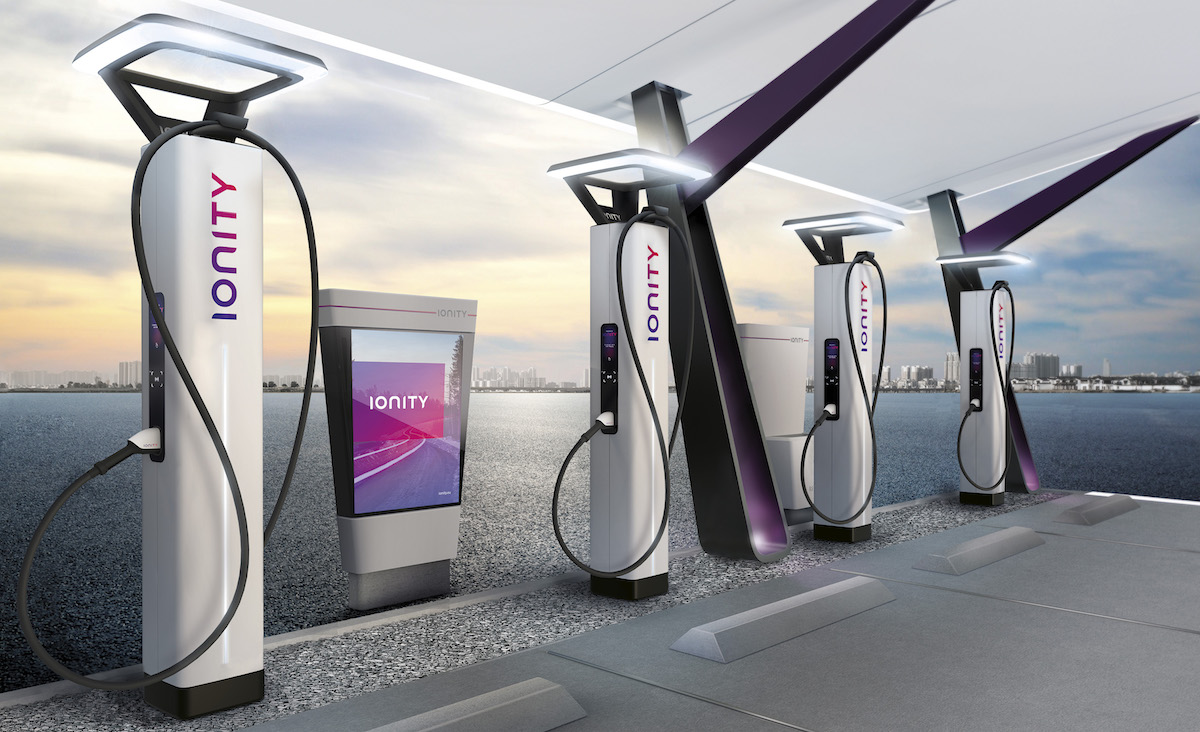Last Update: August 19, 2019

Faster charging means electric car drivers can do road trips the same as gasoline car owners. Get on the road, and stop for only a few minutes at a time to refuel. We can't (yet) do this with an electric car because the manufacturers don't support a 5 minute recharge.
A friend who lives in Romania told me clearly that he will not buy an electric car until it can go straight through from Romania to Germany with only the shortest stop possible for charging. But, I said, it's unhealthy to drive straight through with no breaks. That and other suggestions made no difference to him. Clearly there are potential electric car buyers on the fence who see even a half hour recharging time as a deal breaker.
What does it take to improve electric car recharging time? It's "just" a faster charging rate. Roughly speaking recharge time is the energy required for refueling, divided by the energy added per minute. Adding more energy per minute means it takes fewer minutes to refuel. The same holds true if the vehicle is powered by gasoline, compressed air, electricity or hydrogen.
Units of measure: Electric car charging speed is measured in in "kiloWatts". A kiloWatt is a thousand Watts, or ten 100 Watt light bulbs. Battery pack capacity is measured in kiloWatt-hours. One kiloWatt-hour is one kiloWatt for one hour.
A car with a 120 kiloWatt-hour battery pack, might have 20 kiloWatt-hours remaining capacity after a long drive. Fully recharging the pack means recharging with 100 kiloWatt-hours of electricity. That size of battery pack might provide 350-400 miles of usable range. The question is, with a given charging system how long does it take to recharge the 100 kWh?
As I write this (August 2019) there is a transition underway in DC fast charging for electric cars. The prevailing top charging rate has been 50 kW to 130 kW. Currently the top rate is changing into the 250-350 kW range, and there are non-Tesla charging networks now offering 350 kW charging. As we'll see later this will mean 15-30 minute recharge times to gain hundreds of miles of range.
How to increase electric car charging rate
For any charge rate the time required to recharge is roughly determined by this calculation:
kiloWatt-hours-required = battery capacity - current capacity
time-required = kWh-required / charge rate (kW)
We mentioned a 120 kWh pack earlier with 20 kWh remaining, meaning that 100 kWh is required. At a 10 kW charge rate that requires 10 hours of charging, roughly speaking, and at a 20 kW rate 5 hours are required. This is overly simplified, since it skips over effects like battery temperature and how the charge rate tapers off as the pack fills up. But it is good enough for the discussion here.
Since improving electric car charging time requires a higher charging rate, let's discuss how that's done. We don't just wave a magic wand and poof we can charge at a higher rate. The whole system must be able to handle the higher charge rate. Namely:
- Charging equipment that can handle higher charge rates
- Charging cables, charging plugs, and charging receptacles, that can handle higher charge rates (perhaps with liquid cooling)
- On-board charging capability for higher charge rates
- A willingness by electric car owners to pay charging fees high enough to warrant the equipment
- Battery systems able to be charged at higher rates
- Manufacturers who are willing to warranty cars that charge at higher rates
What's behind these issues is that the charging system is a sequence of equipment:
- Connecting the charging facility to the electrical grid
- Charging stations, charging cords, plugs and sockets
- On-board equipment in cars
- Battery systems in the cars
Achieving a given charging rate means every piece of equipment in the system must be capable of that charging rate. Not only that, but the electrical supply to the charging facility must be able to handle 10 or 20 simultaneous charging sessions.
At the car, and in the charging cable, the concern is whether it is safe for users to handle the charging cord, and whether there is any heating. The charging protocols are designed for safety, for instance the charging cord is not energized until plugged into the car.
Heating, on the other hand, will crop up any time a circuit is overloaded. Those who designed the Combo Charging System designed-in a maximum charge rate for the cables and connectors. The move to 350 kiloWatt charging includes using liquid cooling in the cables to remove heat. That implies the 350 kiloWatt rate may be a limit.
Charge rate required for 5 minutes?
Maybe a five minute recharge is truly required, as my friend in Romania would say. To evaluate this let's calculate an estimate of what's required.
To go back to our equation, 100 kWh of energy in 5 minutes requires a 1,200 kiloWatt charge rate. It's not important to quibble over how exact this estimate is, because the sheer magnitude of delivering 1,200 kW's (a.k.a. 1.2 megaWatts) to a car is huge. And the magnitude is even bigger when considering the power consumption for a facility that might have 10 cars charging at a time.
We have to step back and ponder what kind of electrical connector is required for 1.2 megaWatts of electricity, and what standards organization will certify such a charging system for use by regular people. Is UL going to certify equipment for public use that implements a 1.2 megaWatt charging rate?
That charging rate seems like a non-starter at this time.
What about a 15-30 minutes recharge time?
If indeed a 5 minute recharge is infeasible because it requires about 1 megaWatt per car, what if we lower the charging rate?
Recharging 100 kWh in 15 minutes requires a 400 kW charging rate, which is close to the 350 kW rate currently being deployed. Therefore a 15-30 minute recharge time is a reasonable achievable goal over the next few years.
That means a massive reduction in charging time is underway. If this turns out as expected a 15-30 minute recharge time should give hundreds of miles of range. While this doesn't match the 5 minute threshold, it is a really good recharge rate.
Just how much of an improvement is the 350 kW rate?


A 350 kiloWatt charging rate is between 3x to 7x what has been the typical charging rate for DC fast chargers.
Between 2011 and 2018/2019 the typical DC fast charging rate has been:
- 50 kiloWatts for non-Tesla vehicles (CHAdeMO and Combo Charging Systems)
- 120 kiloWatts for Tesla vehicles
With the 120 kiloWatts rate plenty of Tesla vehicle owners made long distance cross country trips. Going by reports I see online, they're happy with the Supercharger network over this.
Even with the 50 kiloWatt fast chargers plenty of folks have taken long distance trips.
That means that with a 350 kW charging rate we'll find it even easier to take long trips on electricity. But will we see 350 kW charging installed at every fast charging facility? It's not clear 350 kW charging is needed for every fast charging situation.


